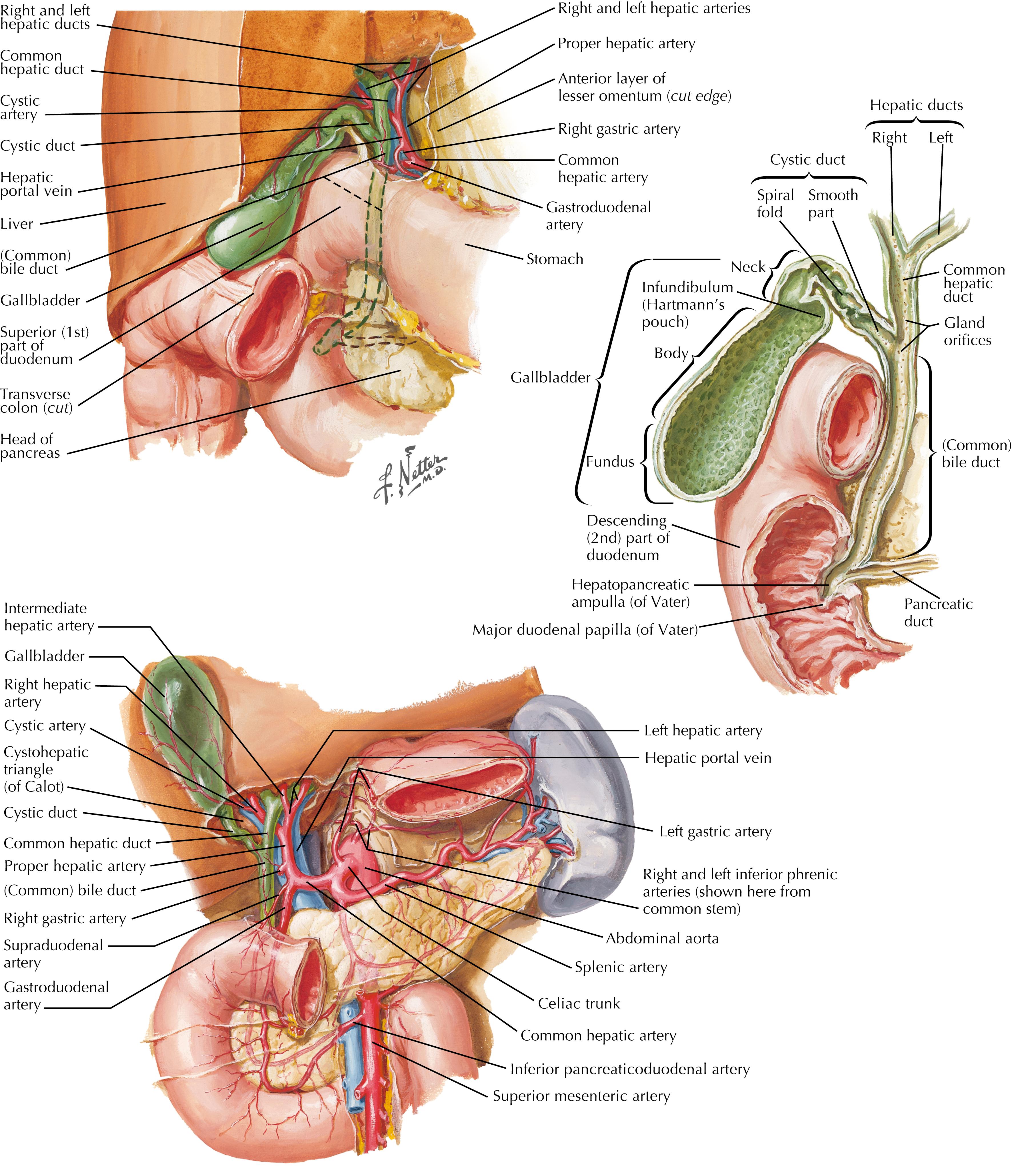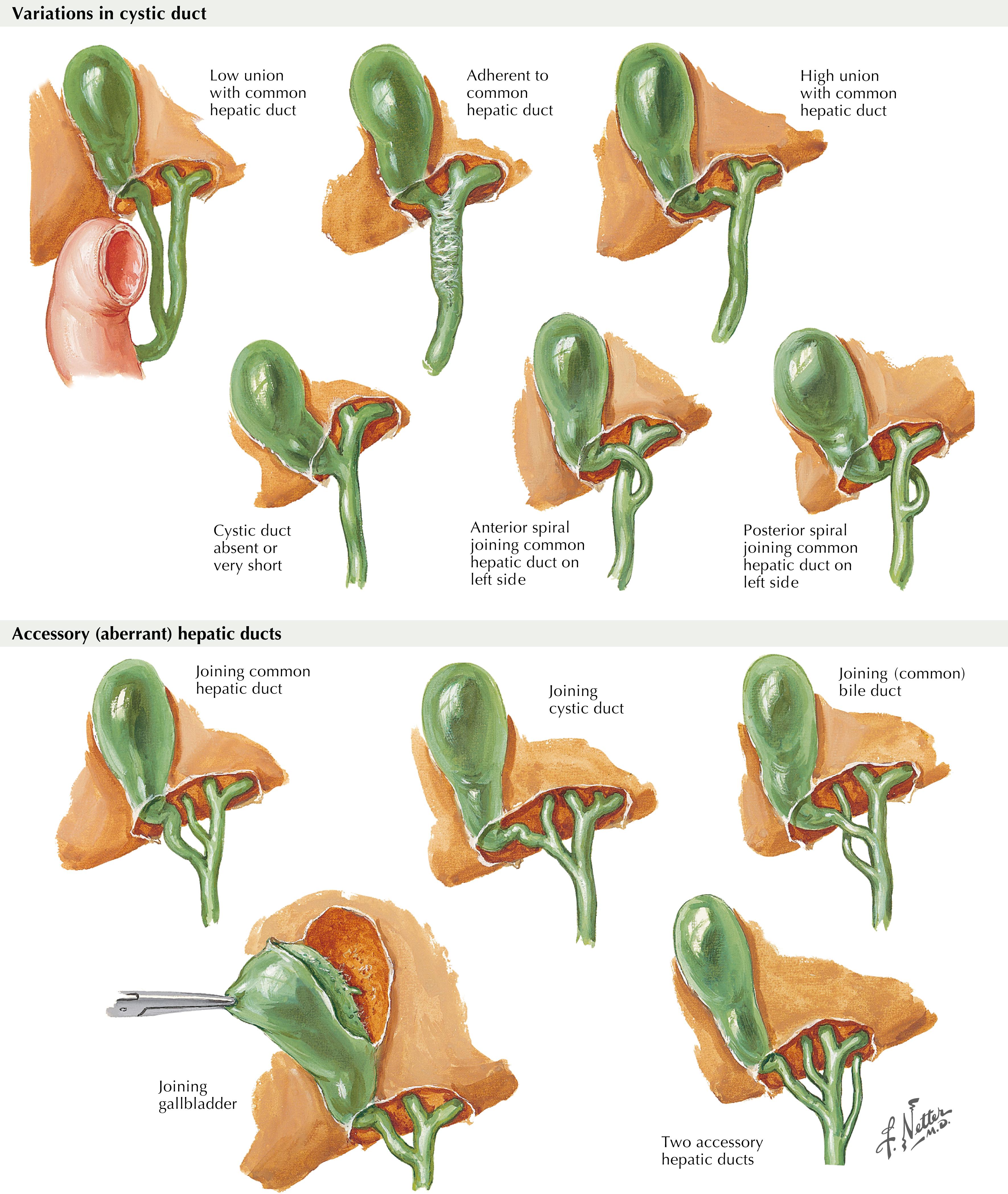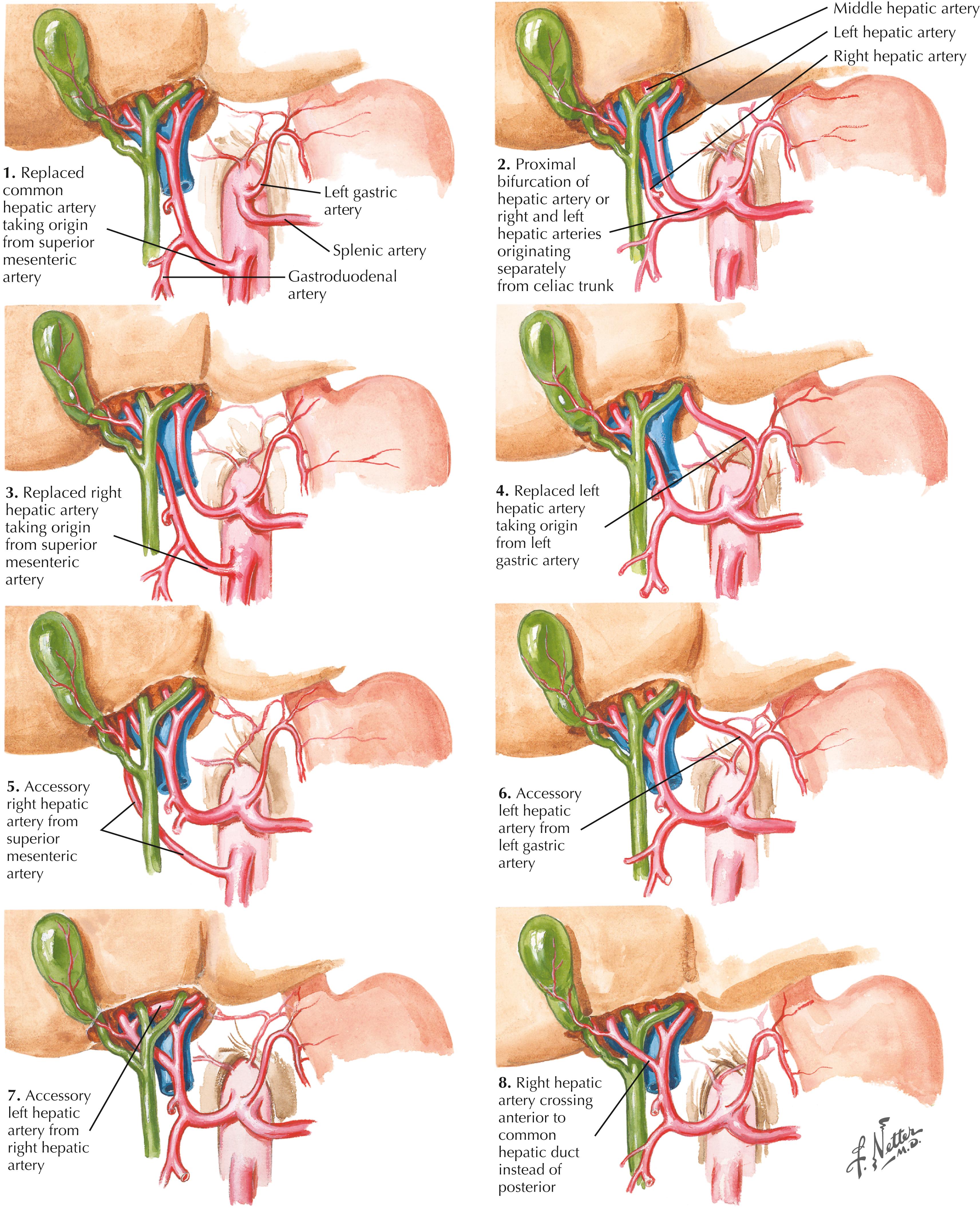Physical Address
304 North Cardinal St.
Dorchester Center, MA 02124
Cholecystectomy is one of the most common abdominal surgeries performed. There are many potential complications, and understanding the correct indications is imperative so that the benefits outweigh the risks. Knowing the proper and safe techniques is critical to help minimize those risks, and this begins with an understanding of anatomy and physiology.
The gallbladder is located between segments IVb and V of the liver. It is one of the landmarks of the Cantlie line that divides the left and right lobes of the liver. The regions of the gallbladder include the fundus, body, infundibulum, neck, and the cystic duct ( Fig. 12.1 ). The cystic duct drains into the common hepatic duct to form the common bile duct. There are many variants of cystic duct anatomy, and being familiar with these variations helps to avoid bile duct injuries during a cholecystectomy ( Fig. 12.2 ). Bile fills the gallbladder via the cystic duct. The valves of Heister, located in the cystic duct, prevent passive reflux of bile from the gallbladder. The venous and lymphatic drainage of the gallbladder is via small tributaries into the gallbladder fossa. There are no named veins draining the gallbladder. The arterial supply is from the cystic artery. The most common origin of the cystic artery is from the right hepatic artery, but this is also subject to variation ( Fig. 12.3 ).



Bile is made in the liver and drains via the right and left hepatic ducts through the common hepatic duct and common bile duct into the second portion of the duodenum. The function of bile is to aid digestion of lipids by creating micelles. The function of the gallbladder is to concentrate bile by absorbing water and sodium. After an individual eats a fatty meal, cells in the duodenum release cholecystokinin, stimulating gallbladder contraction and relaxation of the sphincter of Oddi, releasing the concentrated bile into the duodenum. Bile is made up of bile salts, phospholipids, and cholesterol. When the concentrations of these are imbalanced, stones can precipitate in the gallbladder. The most common type of stones in the West are nonpigmented cholesterol stones. The other category of stones is pigmented stones, further divided into black stones from hemolytic disorders, and brown stones, from bile stasis and bacterial infection.
Become a Clinical Tree membership for Full access and enjoy Unlimited articles
If you are a member. Log in here